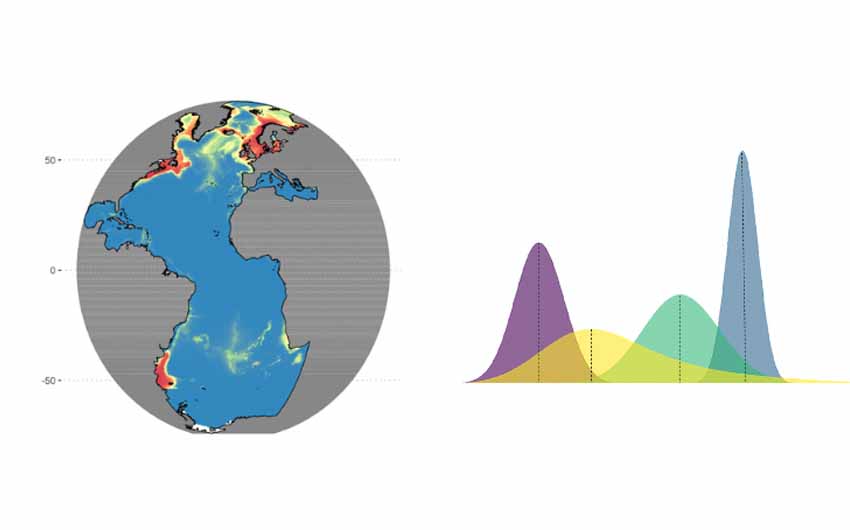GAM-NICHE
Shape-Constrained GAMs to build Species Distribution Models under the ecological niche theory

GAM-NICHE is a new tool developed by AZTI (Valle et al. 2023) to build Species Distribution Models (SDMs) under the ecological niche theory (Citores et al. 2020). It provides a GitHub tutorial in R language with an application to marine fish.
What is it?
Species distribution models (SDMs) are numerical tools that combine observations of species occurrence or abundance at known locations with information on the environmental and/or spatial characteristics of those locations. SDMs are widely used as a tool for understanding species spatial ecology and are also known as ecological niche models (ENM) or habitat suitability models. According to ecological niche theory, species response curves are unimodal with respect to environmental gradients (Hutchinson 1957). While a variety of statistical methods have been developed for species distribution modelling, a general problem with most of these habitat modelling approaches is that the estimated response curves can display biologically implausible shapes which do not respect ecological niche theory. This is because species response curves are fit statistically with any assumption or restriction, which sometimes do not respect the ecological niche theory. To better understand species response to environmental changes, SDMs should consider theoretical background such as the ecological niche theory and pursue the unimodality of the response curve with respect to environmental gradients.
The GAM-NICHE provides a tutorial on how to use shape-constrained generalized additive models (SC-GAMs) to build SDMs under the ecological niche theory framework, based on the development and application to marine fish by Citores et al. 2020. SC-GAMs impose monotonicity and concavity constraints in the linear predictor of the GAMs and avoid overfitting. SC-GAM is an effective alternative to fitting nonsymmetric parametric response curves, while retaining the unimodality constraint, required by ecological niche theory, for direct variables and limiting factors.
What it is for?
- Marine and terrestrial species
- Estimation of species distribution, recruitment, spawning, cartography
- Determining main factors affecting a species
- Monitoring and trend analysis
- Restoration (identification of suitable areas)
- Shifts in biodiversity
- Climate change studies (projections, impacts, vulnerability, adaptation)
- Conservation: definition of areas to protect
- Assessment of anthropogenic pressures
- Identification of (un)exploited areas

